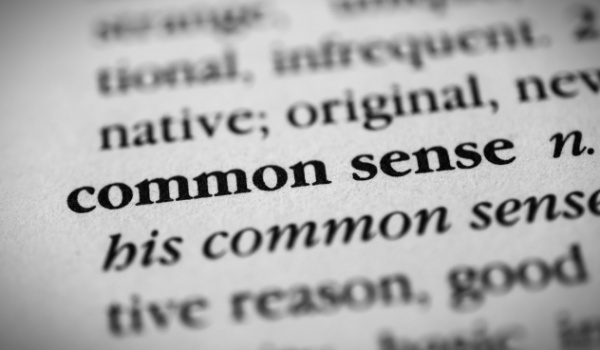Being touted as “the first ever, whole-of-government approach to addressing the risks and harnessing the potential benefits of digital assets and their underlying technology”, President Biden just released his anticipated Executive Order on how he intends to tackle digital asset innovation.
Putting aside the irony of issuing an Executive Order to study an asset class which was explicitly created to possess a community-centric decentralized governance structure,one has to wonder why an Executive Order would be needed at all when there are numerous bipartisan bills, piling up in the halls of Congress, that aim to not only “study the effects of digital assets and their underlying technology” but to provide a suitable regulatory framework for this emergent asset class.
Below are just some of the many cryptocurrency and blockchain bills, introduced over the last four years, that one would have to assume were simply not partisan enough to become law:
- H.Res.1102 – Expressing support for digital currencies and blockchain technology – This bipartisan bill, which was introduced on 9/28/18 by Rep. Tom Emmer, expressed the sense of the House of Representatives that the United States should prioritize accelerating the development of blockchain technology to support transparency, security, and authentication in a way that recognizes its benefits and allows consumer protection while supporting future innovation.
- H.Res.1108 – Expressing the sense of the House of Representatives that blockchain has incredible potential that must be nurtured through support for research and development and a thoughtful and innovation-friendly regulatory approach – This bipartisan bill, which was introduced on 9/28/18 by Rep. David Schweikert, expressed the sense of the House of Representatives that blockchain has incredible potential that must be nurtured through support for future research and development and thoughtful and innovation-friendly regulatory approach.
- H.R.7225 – U.S. Virtual Currency Market and Regulatory Competitiveness Act of 2018 – This bipartisan bill, which was introduced on 12/6/18 by Rep. Darren Soto, would have directed the Commodity Futures Trading Commission to report on virtual currency markets and U.S. competitiveness. This bill was significant enough to be reintroduced on 8/24/21 under H.R.5101.
- H.R.923 – To promote United States competitiveness in the evolving global virtual currency marketplace – This bipartisan bill, which was introduced on 1/30/19 by Rep. Darren Soto, would have directed the Commodity Futures Trading Commission, consulting with the Securities and Exchange Commission and other agencies, to report to committees including Senate Banking and House Financial Services on how cryptocurrencies are regulated in the U.S. and other countries as well as detail the benefits of cryptocurrency and blockchain technology.
- H.R.922 – Virtual Currency Consumer Protection Act of 2019 – This bipartisan bill, which was also introduced on 1/30/19 by Rep. Darren Soto, would have required the Commodity Futures Trading Commission to study how digital assets are being manipulated and which currencies are more susceptible to manipulation.
- H.R.8373 – Digital Commodity Exchange Act of 2020 – This bipartisan bill, which was introduced on 9/24/20 by Rep. K. Michael Conaway, would have established the conditions for the sale of digital commodities, the registration of exchanges, and set forth other requirements.
- H.R.8378 – Securities Clarity Act – This bipartisan bill, which was introduced on 9/24/20 by Rep. Tom Emmer, would have provided clarity on what a digital asset even is. This is pretty important considering that regulators cannot regulate something that hasn’t yet been defined!
- H.R.8989 – To require the Securities and Exchange Commission to conduct a study on the feasibility, benefits, and costs of using a distributed ledger system in the post-trade clearing and settlement process, and for other purposes – This bipartisan bill, which was introduced on 12/16/20 by Representatives Stephen Lynch and Tom Emmer, would have required the Securities and Exchange Commission to report on the feasibility, benefits, and costs of using a distributed ledger system (such as blockchain technology) in the clearing and settlement process after a securities trade is complete.
While the administration’s preference to govern digital assets by Executive Order is worrisome enough, the procedural issues are far less alarming than the substantive ones extracted from the Executive Order itself.
Because I have developed a bit of a knack for reading in between lines and decoding politico speak, I have decided to translate the specific measures of Biden’s Executive Order on Ensuring Responsible Development of Digital Assets so that you can question for yourself why an administration, particularly one whose party dominates both houses, has chosen to evade the customary democratic process.
- MEASURE #1: Protect U.S. Consumers, Investors, and Businesses by directing the Department of the Treasury and other agency partners to assess and develop policy recommendations to address the implications of the growing digital asset sector and changes in financial markets for consumers, investors, businesses, and equitable economic growth. The Order also encourages regulators to ensure sufficient oversight and safeguard against any systemic financial risks posed by digital assets.
Translation: We are directing our departments and agencies, which are on the cusp of complete and total disruption, to “assess” and to potentially, regulate, the very innovation that is about to displace them.
There was a reason that the music moguls of the 1990s were not put in charge of assessing Napster and developing a regulatory framework for music sharing. Common sense dictates that regulatory oversight is not assigned to a potential competitor, for doing so creates a clear conflict of interest and prevents any impartiality.
- MEASURE #2: Protect U.S. and Global Financial Stability and Mitigate Systemic Risk by encouraging the Financial Stability Oversight Council to identify and mitigate economy-wide (i.e., systemic) financial risks posed by digital assets and to develop appropriate policy recommendations to address any regulatory gaps.
Translation: Because it won’t be enough to refer to digital assets as risky, they must be categorized as systemically risky. Therefore, we are going to create a bucket that shall henceforth be called, “The Systemic Risk Bucket”. We will eventually be tasking the Financial Stability Oversight Council to place all decentralized digital assets that compete with our Central Bank Digital Currency (CBDC) into this newly created “Systemic Risk Bucket”. We reserve the right to re-label this bucket should our overuse of the term, “systemic”, become diluted within the public lexicon.
- MEASURE #3: Mitigate the Illicit Finance and National Security Risks Posed by the Illicit Use of Digital Assets by directing an unprecedented focus of coordinated action across all relevant U.S. Government agencies to mitigate these risks. It also directs agencies to work with our allies and partners to ensure international frameworks, capabilities, and partnerships are aligned and responsive to risks.
Translation: As a matter of national security, we will be transferring all decentralized digital assets that compete with our Central Bank Digital Currency from our “Systemic Risk Bucket” to a newly created bucket that we shall call, “The Illicit Bucket”.
- MEASURE #4: Promote U.S. Leadership in Technology and Economic Competitiveness to Reinforce U.S. Leadership in the Global Financial System by directing the Department of Commerce to work across the U.S. Government in establishing a framework to drive U.S. competitiveness and leadership in, and leveraging of digital asset technologies. This framework will serve as a foundation for agencies and integrate this as a priority into their policy, research and development, and operational approaches to digital assets.
Translation: We have been so preoccupied playing partisan politics and working to divide our populace by their skin color, religious views, bedfellows, masking habits and medical beliefs that we lost our standing as the leading global innovator. To make up for lost time, we will now allow our agencies to prioritize the patriotism needed to establish a foundational framework that fosters U.S. competitiveness and leadership for all digital assets – except, of course, those contained in “The Illicit Bucket”.
- MEASURE #5: Promote Equitable Access to Safe and Affordable Financial Services by affirming the critical need for safe, affordable, and accessible financial services as a U.S. national interest that must inform our approach to digital asset innovation, including disparate impact risk. Such safe access is especially important for communities that have long had insufficient access to financial services. The Secretary of the Treasury, working with all relevant agencies, will produce a report on the future of money and payment systems, to include implications for economic growth, financial growth and inclusion, national security, and the extent to which technological innovation may influence that future.
Translation: We need to pretend that we care about “equitable access to safe and affordable financial services” as our very own federal securities agency contemplates raising the accredited investor net worth threshold by tenfold (from $1 million to $10 million), thereby causing a 90% reduction in the number of American households presently able to access most higher yielding alternative asset products. In doing so, we will ensure that 99% of US households will not have the same opportunity to invest in the “future influencing technological innovation” granted to the 1%.
- MEASURE #6: Support Technological Advances and Ensure Responsible Development and Use of Digital Assets by directing the U.S. Government to take concrete steps to study and support technological advances in the responsible development, design, and implementation of digital asset systems while prioritizing privacy, security, combating illicit exploitation, and reducing negative climate impacts.
Translation: Just when you thought we were finished created buckets, we will be creating yet another bucket that shall henceforth be called, “The Bad for the Environment Bucket” where we will be relocating all decentralized digital assets. We will not place any traditional or centralized assets in the “The Bad for the Environment Bucket” no matter how much energy they may use in transporting physical dollars via gas guzzling vehicles and in keeping their banks air conditioned in the summer and heated in the winter, despite the lack of bank visitors.
- MEASURE #7: Explore a U.S. Central Bank Digital Currency (CBDC) by placing urgency on research and development of a potential United States CBDC, should issuance be deemed in the national interest. The Order directs the U.S. Government to assess the technological infrastructure and capacity needs for a potential U.S. CBDC in a manner that protects Americans’ interests. The Order also encourages the Federal Reserve to continue its research, development, and assessment efforts for a U.S. CBDC, including development of a plan for broader U.S. Government action in support of their work. This effort prioritizes U.S. participation in multi-country experimentation, and ensures U.S. leadership internationally to promote CBDC development that is consistent with U.S. priorities and democratic values.
Translation: Our plan all along has been to develop a U.S. Central Bank Digital Currency as “a matter of national interest”. We must assure the public that our goal is to only “promote CBDC development that is consistent with U.S. priorities and democratic values” – despite the fact that CBDCs are the exact opposite of democratic, as corroborated by the fact that communist nations have raced to embrace them. Unlike the communist CBDCs that enable their governments to readily control the spending and savings of their citizenry as well as financially punish those with opposing political views, our CBDC would be run by the independent Federal Reserve which is comprised of “politically unmotivated” non-elected appointees who would never, ever, ever, ever seek to control the spending and savings of their fellow citizens or financially punish those with opposing political views.
- MEASURE #8: The Administration will continue work across agencies and with Congress to establish policies that guard against risks and guide responsible innovation, with our allies and partners to develop aligned international capabilities that respond to national security risks, and with the private sector to study and support technological advances in digital assets.
Translation: As hostile nations evade our sanctions and distance themselves from petrodollars, we will now work with the very Congress, that we’ve completely excluded from the legislative process, in establishing policies for digital assets.
While I praise the administration for taking an interest in studying digital asset innovation, quite frankly, the window for assessment has long closed. If the government really wants to do something to benefit its citizens and ensure America’s global economic leadership position, I have two suggestions.
First, instead of taking a “whole-of-government approach”, try adopting the whole-of-the-people strategy rooted in the innovation itself. Second, stop wasting time and taxpayer money by examining digital assets, and start accumulating them. Having cryptocurrency reserves, primarily bitcoin, may very well be what ultimately saves the country from financial ruin.
Dara Albright is a recognized authority on fintech & digital wealth with a distinguished 30-year career in finance & the host of DWealth Muse podcast. She is also the co-founder of DWealth Education, a novel financial EdTech platform offering incentivized learning for financial professionals, business executives and modern-day investors/consumers (“investumers”) as they seek to understand and capitalize on the fintech revolution.







